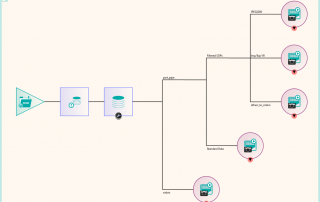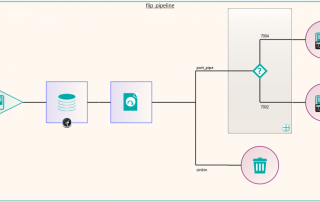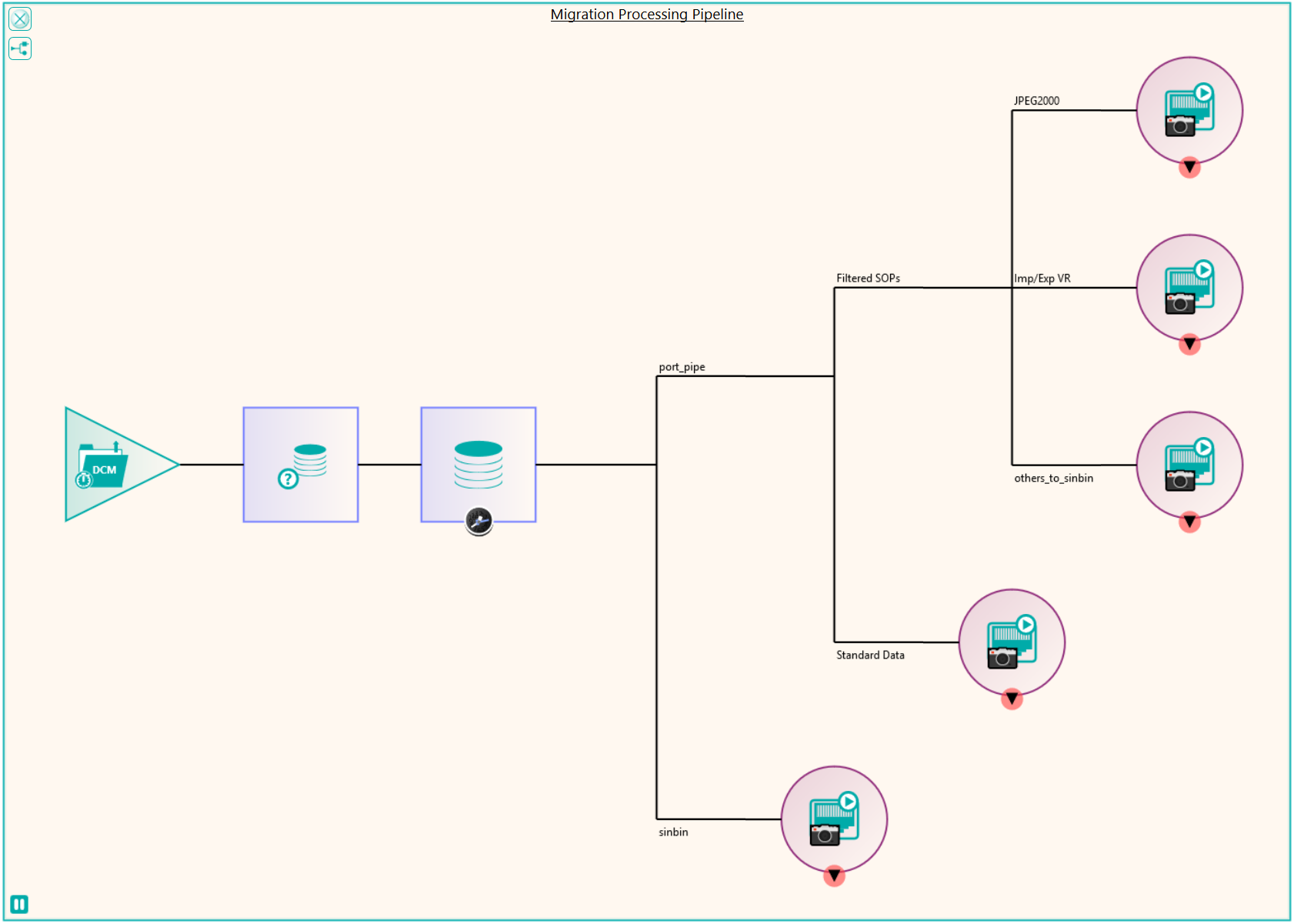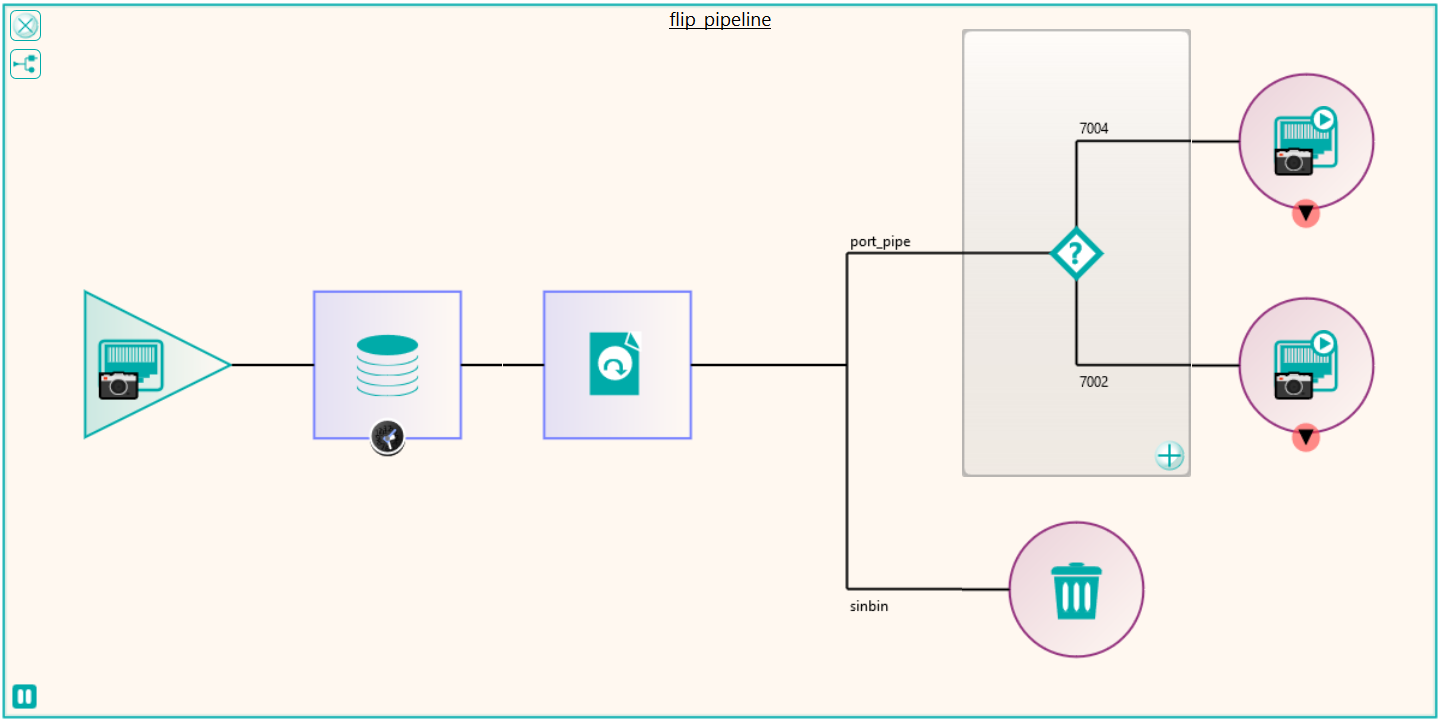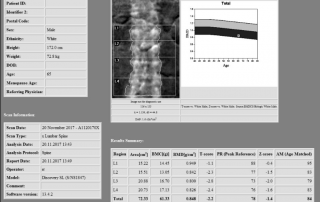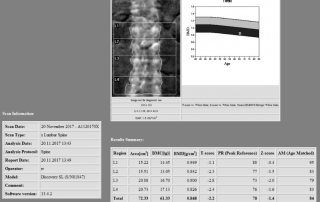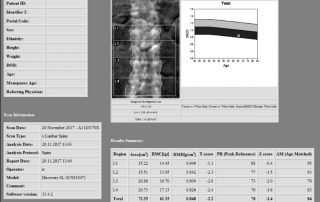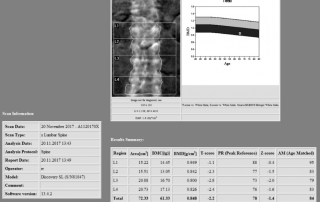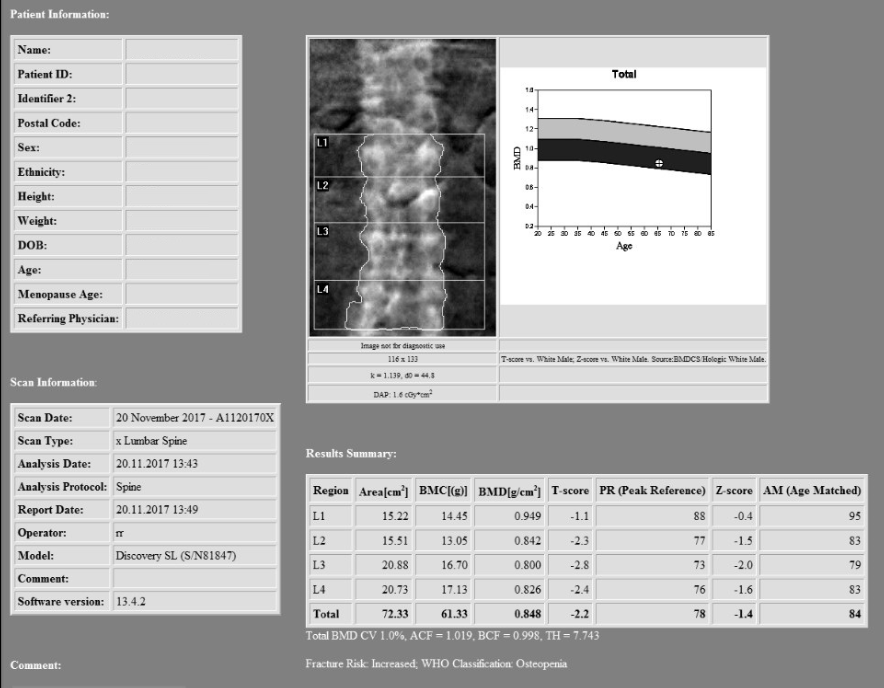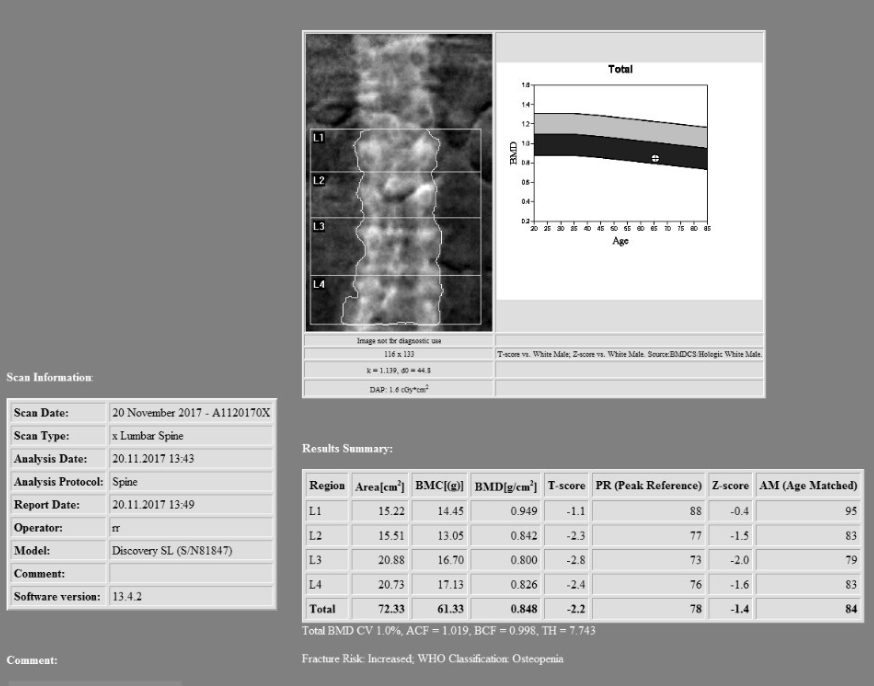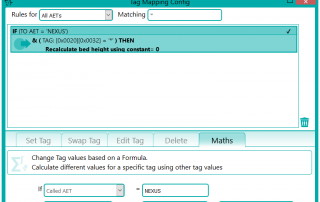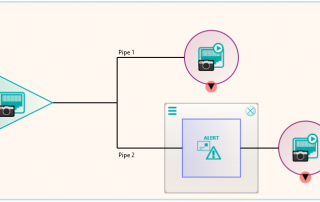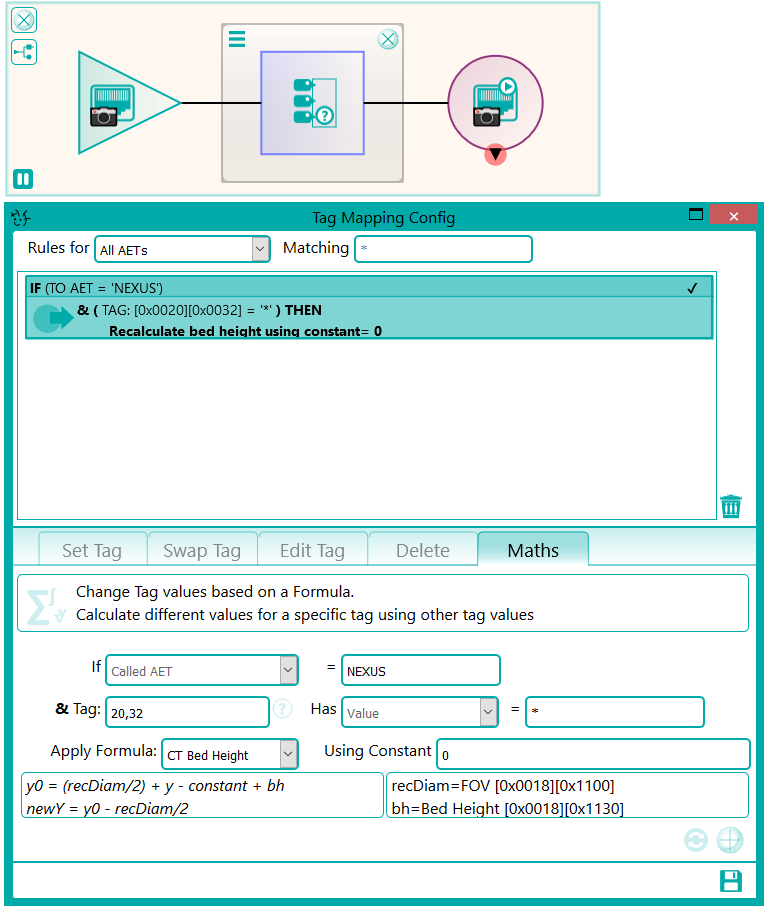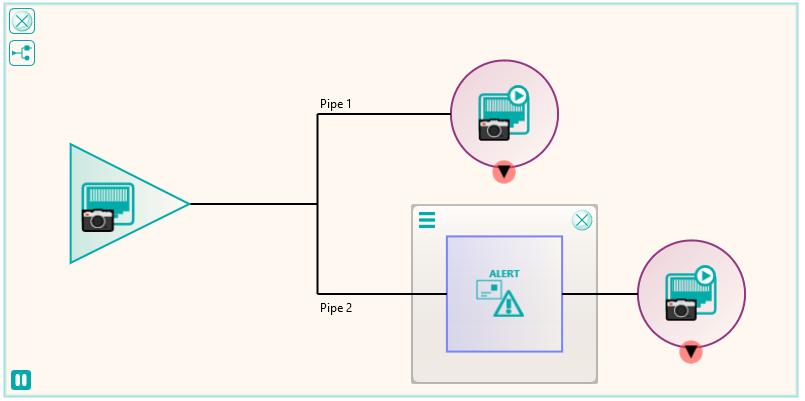After years of Home working, Pukka-J has taken the decision to expand into a new main office in Darlington, South Tees. The new office will allow a brand new base for better collaboration and cross pollination of ideas. Although home working will still have a place on occasions there is no substitute for face to face meetings, discussions and brain storming. Pukka-j also have a satellite office and member of staff in London. The two locations allow Pukka-J to better support the whole of the UK and travel to europe with ease.
Pall Mall Medical PACS Migration
Pukka-j recently relocated the RIS / PACS services at Pall Mall Medical to new hardware at a different site. Pall Mall Medical were keen to bring the archiving services in-house and redirect all the modalities to the new service. Due to limited access and network bandwidth where the data was originally located, Pukka-j worked closely with the IT partners at Pall Mall (Ascent Networks) to find a way to move the services whilst minimising the impact to the department. The process was made simpler because it involved transferring data and services between two Pukka-j systems.
The initial stage was to set up the new services on the new hardware and start to establish connectivity with modalities and external DICOM and HL7 services like teleradiology companies. In order to move the data, the simplest way was to export it to an encrypted external drive and simply copy the data from the old system to the new one along with all the records in the database. Importing the database records brought the new system up to date but there was a small delay in the department whilst all the DICOM data was restored.
Peter Charlton, Senior IT Support at Ascent Medical told us “The product and support we receive from Pukka J are second to none. The internal knowledge of the systems allows Pukka J to provide us with quick and efficient support to any issues with have.”
Please contact us to find out more about our PACS and RIS solution or request an online demonstration
Find Out More
Hengelo PACS Migration via Nexus
The radiology department at ZGT in the Netherlands (https://www.zgt.nl) recently migrated all of the PACS data from their current PACS to a new PACS. Previously the department had utilised Pukka-j’s DICOM products to migrate their data from their previous PACS so when the time came to move their data again, they came to Pukka-j to find the fastest way to move it. With the new Nexus software, the department was able to take greater control over their own migration process with the help of some input from the experts at Pukka-j. This article describes the process followed to successfully move to another PACS provider.
The first stage, as with all migrations was to analyse the current situation. The data was compressed as JPEG2000, with ~30Tb spread across 11 network storage locations. As with many PACSs, the DICOM information in the header was out of sync with the information in the database, in this case a SQL server cluster which the department had access to. There were also references on disk that had been deleted from the database, or the references had been changed to point at different files after a study merge process, thus leaving “orphaned” files on the storage.
In order to maximise the speed at which the data could be transferred, it made sense to maintain the JPEG2000 compression as this was also supported by the destination PACS. This meant only 30Tb of data would be transferred over the network, as opposed to approximately 100Tb if it were decompressed. It was also decided that it would be optimal to read the files directly from the file system and use Nexus to reconcile the header information with that in the database, rather than relying on a query/retrieve via the PACS, that could have impacted on the service being delivered.
Using Nexus, it was possible to rapidly read the data using parallel processing to build a database of the contents of the file system. This highlighted that some data that contained no pixel data was stored as implicit or explicit little endian which would be required to be sent to a different port on the destination PACS. There were also some SOP classes that either weren’t supported or weren’t required on the destination PACS and would need to be filtered out. Data that also couldn’t be found in the database or couldn’t be reconciled for any other reason was also filtered out. In order to store the filtered data, Pukka-j’s Dicom Explorer PACS was set up as a “Sin Bin” archive where the department could review the filtered data and decide what needed to be done with it.
There were a number of studies that needed to be excluded from the migration process, either because they were studies that weren’t required or they would require specific processing. This was handled by the reconciliation node such that, if a study UID was identified (after reconciliation) that matched the exclusion list, it was sent to the Sin Bin. The image shows the Nexus network that was created to first read the data from the file system using multiple processing threads. This input node fed into the reconciliation node to fix up the DICOM information in the header. A database node was used after the reconciliation to keep a record of the data that had been found and whether it was to be sin-binned. The data was then filtered down the appropriate pipelines based on SOP class and transfer syntax to the appropriate DICOM port on the destination PACS.
There were a number of test runs where this pipe line was simulated by sending the data to a terminator node with and without reconciliation to get a handle on the maximum speed at which the data could first be read from the file system and then be reconciled with the database. This benchmarking process allowed the department to assess the storage capabilities of the destination PACS once the destination nodes were configured to send to the new system. Once the first trial runs of the migration were done to iron out the configuration on the destination side, some interesting effects were seen. Due to the way in which the current PACS stored studies, in which studies were “striped” across folders and due to the way the data was read by the processing threads, long delays could be seen between images in a study arriving at the destination. The destination PACS implemented a process which after a period of time, or amount of data, moved images to a slower long term archive. The result of these facts was that once delayed images were sent, then the speed at which the data could be moved started to decrease because of having to write to the slower storage. After discussion, Pukka-j were able to create a new mode of operation for reading the data from the file system, by reading the data as a stripe rather than a whole folder at time, thus minimising the time between images in a study.
Some analysis of the test runs was performed to verify the performance of the reconciliation and the routing of the data to the required ports on the PACS and after a few configuration tweaks, the migration configuration was able to be deployed across four virtual servers, each running a version of Nexus. The 11 file locations were split so each had it’s own pipe line as shown in the diagram. This allowed the processing to be done in parallel across multiple resources. When the configuration was deployed, the migration was started in earnest and ran non-stop for around 3 weeks in which time it maintained around 300,000 images per hour into the destination PACS. The whole process was able to be monitored by the department, who simply referred to Pukka-j in the event that there were any questions over any entry in the logging files.
Following the migration, some of the excluded files that were not sent because they required some further processing could be dealt with. These were files that in the database had transformations recorded against them such as “rotate clockwise 90 degrees”. These were handled by a new node produced by Pukka-j to allow the department to load a list of SOP Instance UIDs and the required transformation. The data was then sent via a DICOM CMOVE through a Nexus pipeline and as they passed through the transformation node, the pixel data was modified accordingly. The network below shows the image transformation pipeline used.
Sander ten Hoeve (Functioneel Applicatiebeheerder sr) at ZGT, who managed the Nexus services throughout the migration told us:
“We decided to contact Pukka-J because of the previous successful migration and over the years we experienced that Pukka-J is able to develop software based on the needs of a client. The software is flexible, highly configurable and intuitive in use. Furthermore we have direct contact with the developer and any issues or wishes is solved and delivered very quickly.”
You can download the Nexus specification document here [Download not found]
You can see more on Nexus here
Please contact us to find out more about Nexus or arrange an online demonstration
Find Out MoreNexus Version 2.04 Released
The latest version of Nexus (Version 2.04) has been released and is available to download to existing customers at Nexus Core Downloads.
The main features of the update include
- A new PNG input node to dicomise PNG format images and add a DICOM wrapper to them using a CSV reference.
- A new de-anonymisation node for reinserting the original primary demographics and UIDs.
If you're not already a customer, please contact us to find out more about Nexus or arrange an online demonstration
Find Out MoreRadiology Teaching Archive at Queen Margaret University
Pukka-j recently installed a new radiology teaching archive at Queen Margaret University to help the department deliver teaching images to radiography students.
A windows server has been configured with the Pukka-j teaching archive to provide access to example radiology images to students. The images are being sent to the archive via a Pukka-j Nexus service running in the hospital network with a DICOM connection to the hospital PACS. The Nexus service has been configured with the anonymisation plug-in such that any identifiable information is removed from the DICOM header of the images as they pass through. Because of the streaming nature of the Nexus service, the images are not cached locally and pass though the service, being modified as they are transferred. In addition to the anonymisation plug-in, the Nexus service has been setup with the redaction plugin so as to remove any demographics in the banner from any ultrasound images and also from the report screen captures of the Dexa images. DICOM SRs also pass through the service and are attached to the study on the teaching archive. These SRs are reviewed at the university, to remove any information that is not required before being made available as part of the study. The images show how the Dexa screen captures have the patient information removed during redaction.
Contact us to find out more about our software or to arrange an online demonstration
Find Out MoreRadiotherapy DICOM Interoperability at Raigmore
As part of the recent service upgrade and data migration at the Radiotherapy department in Raigmore Hospital, Pukka-j recently installed and configured the Nexus DICOM streaming service to facilitate the process. Following the successful migration, Nexus was left in place with a view to the department being able to streamline the work processes in place.
Following some testing, it was apparent to the department that there was some inter-connectivity issues between the new CT scanner and the planning / processing workstations in the department. In particular, the way in which the Y value in the patient position information was calculated differently between the scanner and the workstation. This resulted in issues with planning. In order to help the department solve the immediate problem, Pukka-j implemented an extension to the DICOM tag manipulation node within Nexus to allow the department to specify how the Y value of the patient image position should be modified between the two systems.
A second workflow issue was also found by the department in that some values in a scan were potentially incorrect but wouldn’t be noticed until after a patient had left the department. In order to alert the department as quickly as possible to any potentially incorrect settings, a new notification node was added to the Nexus service that has the ability to notify users via email if DICOM studies with a specific pattern are observed. The service has been configured to email the users with information on the potentially incorrect values in the DICOM header so that it can be reviewed before the patient has left the department.
Raigmore Dicom Anonymisation Service
As part of the recent Radiotherapy DICOM service migration at Raigmore hospital, Pukka-j set up the new DICOM Anonymisation service that is built on Nexus (DICOM Streaming Service) to allow the department to anonymise data for clinical trials. The DICOM anonymiser operates on the header information in the DICOM files as they pass through the node. Specific anonymisation rules can be configured based on the called AET, referred to as the “Trial AET” within the anonymiser. Because some systems may have had the original data, if they receive the anonymised data with the original UIDs unchanged, then it is possible the original demographic data will be displayed by such a system as it has cached those details for the original UIDs. This is handled by the anonymiser by selecting to re-UID the DICOM header. A record is kept of the original and new UIDs as a look-up. This allows any cross-referencing using UIDs between DICOM files to be maintained, such that, if the system finds a UID it has replaced for the selected trial in the past, it uses the same one again. This allows DICOM objects such as RTPLANs to maintain a reference to an anonymised CT series, even after UIDs have been replaced.
You can download the Nexus specification document here [Download not found]
You can see more on Nexus here
Contact us to find out more about our software or to arrange an online demonstration
Find Out More
Raigmore Radiotherapy DICOM Archive Migration
Pukka-j recently migrated the existing Radiotherapy DICOM service at Raigmore Hospital in Inverness to new hardware and performed the DICOM migration. The update was performed as part of a recent upgrade to the CT scanner in the department and involved a replacement of the primary and secondary archive servers, updates to the DICOM services and connectivity with the new equipment being installed in the department.
In order to move the data, Nexus, Pukka-j’s DICOM streaming service was used to rapidly read all the data and reconcile any DICOM files with the entries in the database. The Nexus service is able to rapidly read data due to it’s multi-threaded processing, which allowed the entire archive to be migrated and reconciled to the new server in just a few days.
Contact us to find out more on the Pukka-j PACS migration services or the capabilities of the Nexus DICOM service or to arrange an online demonstration
Find Out More
Pukka-j reports a positive response to its recent ‘test drive’ of the company’s new service for parents-to-be
Pukka-j has created a new and innovative way for pregnant women to be able to access and share digital pictures and video from their ultrasound scans.
Recently, the company carried out a pilot run of the software and found the reactions from those involved in the trial to be extremely positive, with one mother-to-be commenting, “MeetmiBaby was so easy to use and the pictures are great quality; it makes it so much simpler to share with family and friends.”
The new service, which is being marketed under the brand “MeetmiBaby™, has been developed in response to a request from an NHS Trust to help them streamline their procedure for supplying pregnant women with pictures of their baby scans. Pukka-j ,by supplying an e-commerce solution, removes the need for the hospital to deal with direct payments, as a selection of images after the diagnostic scan are sent direct from the modality to a MeetmiBaby picture processing service, which resides in the Trust’s IT environment. The images are uploaded to a secure ‘cloud’, where parents-to-be are able to find their baby scans via a unique identification code and preview their gallery to select which ones they would like to buy.
The pictures and video are delivered in a variety of ways to make life as simple as possible for users. After purchase they can be downloaded directly from the website, and the purchaser also receives a personalised email with their chosen baby scan products attached.
Initial results have shown the baby products to be available for purchase within minutes of the scan and because they are digital, they can be copied and shared with grandparents and friends via social networking or email or print. The emails to mothers-to-be are an easy way for them to access their purchases from any device they have available, on which they can receive emails; smart phones, tablets and PCs. Access to download the baby scans from the internet provides great flexibility in delivery of the product.
Another mother-to-be taking part in the trial responded enthusiastically with the comment, “Taking a good photo of a baby scan is really difficult! MeetmiBaby was so easy to use and the pictures are great quality. Being able to print my baby scan was such a bonus; it made sharing our wonderful news with my loved ones so much easier by giving them one of my special pictures to keep forever.”
Pukka-j is working with the NHS to develop innovative maternity social imaging services for their mothers-to-be.
Pukka-j launches a new service for maternity scans: “MeetmiBaby”™ is predicted to revolutionise the process and experience of ultrasound scanning
Pukka-j, a UK based specialist medical technology company, announces that it will be offering a new service for pregnant women. ‘MeetmiBaby’ has the potential to revolutionise the process and experience of ultrasound scanning for mothers-to-be who attend the hospital for scans and would like to have a personal record of the scan. Pukka-j has outstanding reputation for ‘outside the box’ solutions, and the launch of this new service fits with the company’s IT skills. MeetmiBaby is a technology service that has been developed to improve the experience for the mother-to-be and quality of the baby scan pictures supplied for social use.
The procedures at present for mothers-to-be to obtain an image of their scan vary from site to site. Sometimes, they are supplied by the sonographer completing the scan and at other sites a token is provided which can be exchanged for a thermal print. During discussions regarding implementation of a new system, it was decided not to improve the existing service, the coin machine that provided a token or a photo booth that printed off the copies, and instead to replace it with a ‘high tech paperlight’, digital option.
Pukka-j’s e-commerce solution removes the need for the hospital to deal with direct payments as the images are sent from the modality to a MeetmiBaby picture processing service, which resides in the Trust’s IT environment. On receipt of diagnostic images, the picture processing service redacts data by blacking out the burnt-in study details to anonymise the data for the maternity social pictures (Jpegs) and video (Mpegs). Once in a social format the MeetmiBaby, picture processor service creates a unique code and QR code which is printed by hospital staff and handed to the mother-to-be.
The social pictures and video are packaged and sent to a secure MeetmiBaby cloud ready for the mother-to-be, to log-in to a MeetmiBaby e-commerce web shop, to view her ‘bespoke’ baby gallery, from which she can choose and purchase on line, ready to share the baby scan ‘high resolution’ pictures and video with family and friends.
Louise Crossley, Business Development/Commercial Director at Pukka-j says, “MeetmiBaby™” is a brand new way of receiving and paying for a baby scan picture and obviously the way forward. It is designed to assist parents-to-be to get the very best out of their hospital scans. We think it has great potential and we are hoping to develop this service through hospitals and ultrasound vendors”
One of the main advantages of the service is that the technology enables easy sharing to popular social networking sites including FACEBOOK, INSTAGRAM and TWITTER. Other benefits include the availability of premium baby scan pictures and choice of pictures, a user-friendly website, and the possibility to purchase scans for up to ninety days, providing secure online payment options. The images can be downloaded to a smart phone, tablet, laptop or PC.
Pukka-j anticipate being able to implement a pilot project using the new software in the next two to three months.

